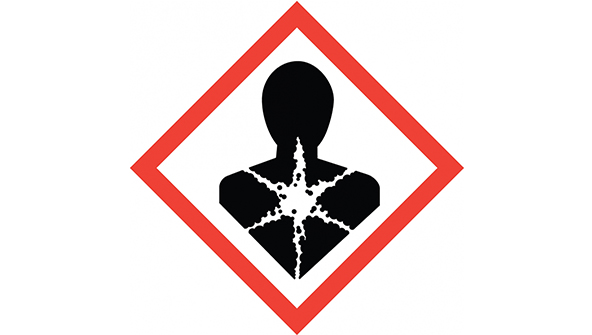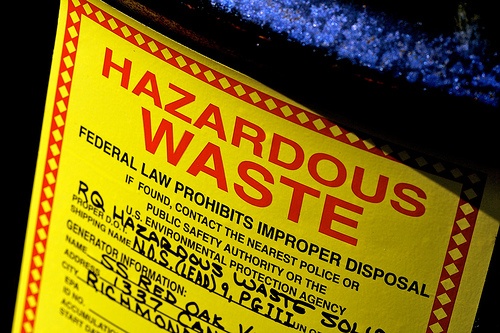On September 13, the US Environmental Protection Agency (EPA) added to its website a portal with information about the agency’s many regulatory, research and informational efforts addressing carcinogen hazards and controls. This information supports the Biden Administration’s “Cancer Moonshot.” EPA undertakes carcinogen control efforts by applying legal authority under many of the environmental protection statutes it administers. The remainder of this note summarizes the agency efforts identified on EPA’s new web portal.
Read MoreAudit, Compliance and Risk Blog
Jon Elliott
Recent Posts
New EPA website compiles agency cancer prevention efforts
Posted by Jon Elliott on Mon, Oct 23, 2023
Tags: Health & Safety, EPA, CAA, tsca, CWA, NESHAPs, FIFRA, Healthcare, Illness, Cancer Moonshot
Pollution Prevention Plan requirements under Canadian Environmental Protection Act
Posted by Jon Elliott on Wed, Sep 27, 2023
The Canadian Environmental Protection Act of 1999 (CEPA) provides a variety of federal environmental protection provisions throughout Canada. The Minister of the Environment and Climate Change (the Minister; who oversees Environment and Climate Change Canada (ECCC), and to which I attribute CEPA authorizations in this note) prepares regulations (including lists of chemicals regulated in different circumstances), and conducts additional planning, regulatory and enforcement activities. In particular, CEPA authorizes the Minister to issue Pollution Prevention Notices (P2 Notices) directing targeted entities to prepare P2 Plans to improve management of any listed “Toxic Substance” in order to reduce environmental impacts. The rest of this note summarizes P2 requirements, which will be revised to conform with CEPA amendments adopted this summer by Bill S-5, the “Strengthening Environmental Protection for a Healthier Canada Act” (S-5), which received Royal Assent on June 13, 2023.
Read More
Tags: Environmental, Environment, Environmental Policy, Pollution, CEPA, environmental protection
Several national laws empower the US Environmental Protection Agency (EPA) to set standards for the cleanup of contamination that resulted from accidental or deliberate releases of chemicals and other materials onto land or into water. EPA’s actions include direct requirements for cleanup by responsible parties, and also inform other parties’ evaluations of if and how to prepare contaminated areas for reuse – often referred to as “brownfields” since they’re assumed to be dirtier than never-used “greenfields.” The remainder of this note discusses EPA’s 73 page “Climate Smart Brownfields Manual,” issued by the agency in 2021
Read MoreTags: Health & Safety, EPA, chemical safety, Hazardous Waste, Environment
EPA and Corps of Engineers redefine “Waters of the United States” in response to Supreme Court
Posted by Jon Elliott on Tue, Sep 19, 2023
On September 8, 2023, the US Environmental Protection Agency (EPA) and US Army Corps of Engineers (Corps) adopted revised definitions of “waters of the United States” (WOTUS) which is a critical but undefined term in the Clean Water Act (CWA). As I’ve discussed repeatedly, the agencies, potentially regulated entities, and others have disputed possible definitions for decades. Most recently, in May 2023 the US Supreme Court adjusted its own precedent to over-rule definitions adopted by EPA and the Corps in January 2023 (I discussed the January rules HERE, and the Supreme Court decision (Sackett v. EPA) HERE). The rest of this note identifies the newest regulatory (re)definitions, adopted to conform the agencies’ regulations to the latest Supreme Court guidance restricting the types of wetlands potentially considered to be WOTUS subject to CWA regulation.
Read MoreTags: EPA, clean water, CWA, Clear water, water pollutants, environmental law, water, WOTUS
On August 17, the US Environmental Protection Agency (EPA) issued a memorandum announcing its National Enforcement and Compliance Initiatives and continuing enforcement priorities for the upcoming fiscal years 2024-2027 (NECI memo). This announcement specifies existing initiatives that EPA will extend, and additional new ones. The NECI memo explains that EPA selected its priorities based on the following three criteria:
- the need to address serious and widespread environmental issues and significant violations impacting human health and the environment, particularly in overburdened and vulnerable communities
- a focus on areas where federal enforcement authorities, resources, and/or expertise are needed to hold polluters accountable and promote a level playing field
- alignment with EPA’s Strategic Plan.
The remainder of this note summarizes the enforcement priorities expressed in the NECI memo.
Read MoreTags: Environmental, EPA, Environmental Policy, NECI
The Occupational Safety and Health Administration (OSHA) is authorized to inspect regulated workplaces, although it generally limits its inspections to workplaces deemed highly hazardous (often targeted sector-wide through National Emphasis Programs (NEPs) or their regional or state equivalents), or in response to complaints or reported incidents of injury or illness (I&I). OSHA regulations include inspection procedures (29 CFR 1903), which OSHA proposed on August 30, 2023 to clarify and revise slightly. The rest of this note summarizes OSHA’s procedures briefly, including the proposed changes.
Read MoreTags: Employer Best Practices, OSHA, Employee Rights, Employment, workplace safety
EPA proposes non-detect lead contamination standards after residential abatement
Posted by Jon Elliott on Tue, Aug 29, 2023
Lead and lead-containing materials are among the longest-used materials in construction and industry. Lead has been used in commercial, residential, and ceramic paint; in electric batteries and other devices; as a gasoline additive; for weighting; and other purposes. It also has been recognized as toxic to human health and the environment at least since the Romans, although understanding of the extent and severity of lead hazards has improved greatly in recent decades. Accordingly, environmental, occupational and public health agencies have progressively tightened standards to reduce lead exposures. On August 1, 2023, the Environmental Protection Agency (EPA) proposed to tighten post-remediation clearance levels as low as “non-detect.” The rest of this note discusses EPA’s latest proposal, and provides some context and background.
Read MoreTags: EHS, EPA, tsca, Hazardous Waste, ESG
EPA to reconsider management of containers that held hazardous waste
Posted by Jon Elliott on Tue, Aug 22, 2023
The Environmental Protection Agency (EPA) applies its authority under the Resource Conservation and Recovery Act (RCRA) to set national requirements for containers – such as drums – that may be contaminated after use to accumulate hazardous chemicals and wastes. These rules include the “empty container rule” first promulgated in 1980. On August 11, 2023 EPA published in the Federal Register a “Used Drum Management and Reconditioning Advance Notice of Proposed Rulemaking” (ANPRM), setting forth the agency’s thinking about existing container management requirements and possible enhancements and regulatory and non-regulatory alternatives to its existing approaches. The rest of this note summarizes EPA’s ruminations, which may lead to a formal rulemaking.
Read MoreTags: EPA, RCRA, Hazardous Waste
Mexico adopts workplace safety rules covering teleworkers
Posted by Jon Elliott on Wed, Aug 09, 2023
On June 8, Mexico’s Ministry of Labor and Social Welfare (Secretaría del Trabajo y Previsión Social (STPS)) published Official Mexican Standard (Norma Oficial Mexicana (NOM)) NOM-037-STPS-2023 Telework-Safety and Health Conditions at Work (“NOM-037” or "Standard"), which will take effect on December 5. The new Standard will require employers to take specific measures to protect workers who spend at least 40% of their worktime operating in what the Standard calls the “teleworking modality.” The remainder of this note summarizes these new requirements.
Read MoreTags: workplace safety, STPS, Mexico
This summer is again bringing record-breaking heat to parts of North America. Outdoor work in the summer sun can lead to heat illness, as can indoor work in spaces that aren’t sufficiently insulated or cooled. Since 2008, Washington state has required employer actions to protect employees from extreme heat during summer months, through rules administered by the Department of Labor & Industries’ (L&I’s) Division of Occupational Safety and Health (I discussed the pre-2023 rules HERE). Effective July 17, 2023, L&I has updated its Outdoor Heat Exposures rules, revising and expanding the requirements and making them applicable year-round. The remainder of this note summarizes the changing requirements.
Read MoreTags: Protecting employees, Heat, Be Heat Smart, heat illness, Labor & Industries










